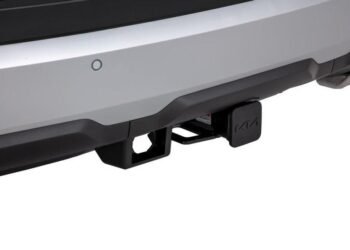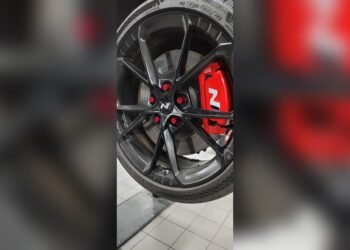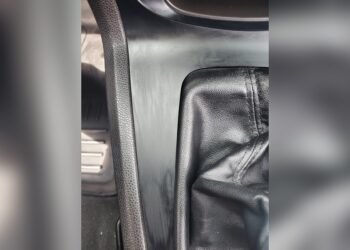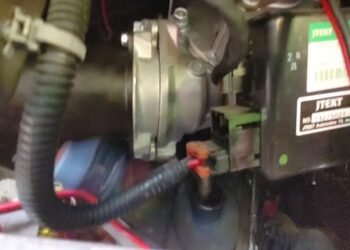If you’re thinking about protecting your aluminum diamond plate with a bedliner, you’re on the right track. Aluminum diamond plate looks great and offers durability, but it can still suffer from scratches, dents, and corrosion over time.
Applying a bedliner adds an extra layer of protection that keeps your surface looking sharp and lasting longer. But how do you make sure the bedliner sticks well and delivers the best results? You’ll discover simple, effective steps to prepare your aluminum diamond plate and apply a bedliner that bonds strong and stays tough.
Keep reading to learn how you can upgrade your aluminum surfaces with a durable finish that stands up to wear and tear.
Benefits Of Bedliner On Aluminum Diamond Plate
Applying a bedliner on aluminum diamond plate offers several key benefits. It improves the surface’s strength and protects it from damage. The coating adds a layer that shields against wear and tear, extending the life of the aluminum. It also enhances safety by improving grip and prevents slips. The look of the aluminum becomes more attractive and professional with the bedliner finish.
Enhanced Durability
Bedliner forms a tough, protective layer on the aluminum diamond plate. It guards against scratches, dents, and abrasions. This added strength helps the surface last longer under heavy use. The bedliner absorbs impacts that might otherwise damage the aluminum. It keeps the diamond plate looking new even after rough handling.
Corrosion Resistance
Aluminum can corrode over time when exposed to moisture and chemicals. Bedliner acts as a barrier that blocks water and corrosive substances. This prevents rust and oxidation from forming on the surface. The coating helps maintain the integrity of the aluminum in harsh environments. It reduces maintenance needs and protects the metal’s lifespan.
Improved Grip And Safety
The textured finish of the bedliner increases traction on the diamond plate. It reduces slipping risks in wet or oily conditions. This is important for truck beds, toolboxes, and flooring applications. A better grip improves user safety during loading and unloading. The bedliner surface stays slip-resistant for a long time.
Aesthetic Appeal
Bedliner gives aluminum diamond plate a uniform, matte finish. It hides scratches and blemishes for a cleaner look. The coating can be applied in different colors to match style preferences. This enhances the overall appearance of trucks, trailers, or equipment. A neat finish adds value and a professional touch.

Credit: www.amazon.com
Surface Preparation Essentials
Preparing the aluminum diamond plate surface is crucial before applying a bedliner. Proper surface preparation ensures strong adhesion and long-lasting protection. Skipping these steps can cause peeling or uneven coating. Focus on cleaning, sanding, and priming the surface carefully.
Cleaning And Degreasing
Start by removing dirt, oil, and grease from the aluminum surface. Use a wax and grease remover or a strong degreaser. Wipe the surface with a clean cloth to avoid residue. A clean surface allows the bedliner to bond properly with the metal.
Sanding Techniques
Lightly sand the diamond plate with coarse-grit sandpaper, around 80 to 120 grit. Sanding creates tiny scratches that help the bedliner stick better. Focus on all raised areas and edges. Remove sanding dust with a tack cloth or clean rag before priming.
Choosing The Right Primer
Select a primer designed for aluminum surfaces. Acid etch primers or adhesion promoters work best. Apply one or two thin coats and let them dry fully. The primer improves bedliner adhesion and prevents corrosion under the coating.
Types Of Bedliner Coatings
Bedliner coatings protect aluminum diamond plate surfaces from scratches, dents, and corrosion. They improve durability and add a non-slip texture. Different types of bedliner coatings suit various needs and budgets. Understanding these options helps you choose the right one for your project.
Each type offers unique application methods and finish qualities. Some provide thicker protection, while others focus on ease of use. Here is a breakdown of common bedliner coating types.
Spray-on Bedliners
Spray-on bedliners offer a smooth and even finish. Professionals often use spray guns for application. This method ensures complete coverage and a tough surface. Spray-on coatings bond well with aluminum diamond plate after proper surface prep. They resist UV rays and chemicals, keeping the surface looking new longer.
Roll-on Bedliners
Roll-on bedliners are easy to apply with a paint roller. They create a textured, durable coating that protects against impact. Roll-on options suit DIYers wanting good protection without special equipment. These coatings dry quickly and can be layered for extra strength. Roll-on bedliners work well on flat and curved aluminum surfaces.
Brush-on Options
Brush-on bedliners are ideal for small or detailed areas. They allow precise control over the coating thickness. This method requires patience but can reach tight spots spray or roll methods miss. Brush-on coatings are thicker and provide good protection against wear. They are perfect for touch-ups on aluminum diamond plate surfaces.
Popular Brands And Products
Top bedliner brands include Line-X, Raptor, and Herculiner. Line-X offers professional spray-on systems with strong adhesion. Raptor provides DIY kits with primers made for aluminum. Herculiner features brush-on and roll-on options for easy application. These brands have proven durability and excellent customer reviews. Choosing a reputable product ensures lasting protection for your aluminum diamond plate.
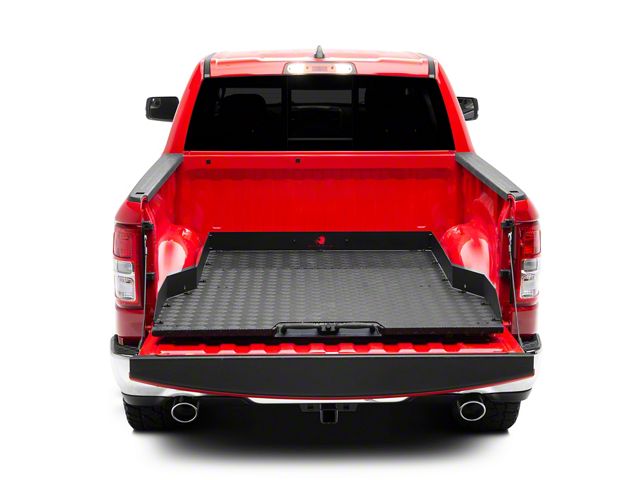
Credit: www.americantrucks.com
Step-by-step Application Process
Applying bedliner on aluminum diamond plate requires care and patience. The process involves cleaning, priming, coating, and allowing proper drying. Each step ensures strong adhesion and a durable finish. Follow this simple guide for best results.
Gathering Tools And Materials
Start by collecting all necessary tools and materials. You will need a wax and grease remover, coarse-grit sandpaper, a suitable primer, bedliner coating, a spray gun or roller, masking tape, and protective gear. Having everything ready saves time and avoids mistakes.
Applying Primer To Aluminum
Clean the aluminum surface thoroughly using wax and grease remover. Sand the surface with coarse-grit sandpaper to create texture. Apply one or two coats of an acid etch primer designed for aluminum. This step improves bedliner adhesion and prevents peeling.
Spraying Or Rolling Bedliner
Choose between spraying or rolling the bedliner based on your tools and skill level. Use even, overlapping strokes to cover the entire surface. Apply multiple thin coats instead of one thick coat. This approach prevents drips and ensures a smooth finish.
Curing And Drying Times
Allow the bedliner to dry fully between coats. Follow the manufacturer’s recommended drying time, usually several hours. After the final coat, cure the bedliner for at least 24 to 48 hours. Proper curing is crucial for durability and resistance to wear.
Common Challenges And Solutions
Applying bedliner on aluminum diamond plate presents unique challenges. These surfaces differ from traditional steel beds. Understanding common issues helps achieve a durable finish. Proper solutions ensure the bedliner sticks well and lasts long. Below are typical problems and ways to fix them.
Adhesion Issues
Bedliner often struggles to stick to smooth aluminum. This happens due to the metal’s slick surface. Oils and residues can block adhesion. Clean the aluminum thoroughly using a wax and grease remover. Sand the surface with coarse-grit sandpaper to create texture. Use an acid etch primer designed for aluminum. These steps improve the bedliner’s grip and prevent peeling.
Surface Imperfections
Aluminum diamond plate may have dents or scratches. These flaws affect the final appearance and coating strength. Fill deep scratches with a metal filler before applying the bedliner. Sand the area smooth once dry. This creates a flat base for the coating. Inspect the surface carefully to ensure it is even. A smooth surface allows the bedliner to spread uniformly.
Temperature And Humidity Effects
Temperature and humidity impact bedliner drying and curing times. High humidity slows drying and can cause bubbles. Low temperatures make the coating thick and hard to apply. Apply bedliner in moderate weather conditions between 50°F and 85°F. Work in a dry, ventilated area to reduce moisture. Follow manufacturer instructions for best curing results.
Credit: www.tacomaworld.com
Maintenance Tips For Longevity
Maintaining a bedliner on aluminum diamond plate extends its life and keeps it looking new. Regular care prevents damage and preserves the protective coating. Simple steps help avoid costly repairs and maintain the surface’s durability.
Cleaning Bedliner Surfaces
Use a mild detergent mixed with water to clean the bedliner. Avoid harsh chemicals that can break down the coating. Rinse thoroughly with clean water to remove dirt and soap. Dry the surface with a soft cloth to prevent water spots. Clean regularly to stop grime buildup that can wear the surface.
Repairing Minor Damages
Inspect the bedliner often for small scratches or chips. These can expose the aluminum underneath to corrosion. Use a touch-up kit designed for bedliners to fix minor damages. Follow the instructions carefully and allow the repair to dry completely. Prompt repairs stop damage from spreading and keep the surface strong.
Reapplying Coating When Needed
Over time, the bedliner may fade or wear thin in some areas. Reapply the coating to restore full protection. Clean and sand the surface lightly before applying new layers. Use products made for aluminum diamond plate for better adhesion. Regular reapplication keeps the bedliner effective and extends its lifespan.
Applications Beyond Truck Beds
Bedliner on aluminum diamond plate offers strong protection beyond truck beds. Its durability and grip make it perfect for many tough uses. The coating shields surfaces from scratches, rust, and wear. This extends the life of items that face harsh conditions every day.
Applying bedliner creates a non-slip, weather-resistant surface. It works great on aluminum diamond plate, which is already sturdy and lightweight. Here are some common uses beyond truck beds.
Toolboxes And Storage Units
Toolboxes often see rough handling and heavy tools. Coating them with bedliner protects against dents and corrosion. The bedliner finish also prevents tools from sliding around inside. This keeps your gear safe and organized. Aluminum diamond plate toolboxes with bedliner last longer and look better.
Boat Rails And Marine Equipment
Marine gear faces water, sun, and salt damage daily. Bedliner on aluminum diamond plate boat rails resists rust and fading. It adds extra grip for safety on slippery surfaces. The coating withstands harsh marine environments without peeling or cracking. This makes it ideal for boats and docks.
Off-road And Recreational Vehicles
Off-road vehicles need tough protection from mud, rocks, and debris. Bedliner on aluminum diamond plate parts guards against scratches and dents. It also helps reduce noise and vibration. Recreational vehicles stay in better shape with bedliner coating. This keeps them ready for rough adventures.
Frequently Asked Questions
Will Bedliner Stick To Aluminum?
Yes, bedliner sticks to aluminum with proper preparation. Clean, sand, and apply a suitable primer before coating for best adhesion.
Will Spray Paint Stick To A Diamond Plate?
Spray paint can stick to diamond plate if you clean and sand the surface first. Use a primer for better adhesion.
Can You Use Rhino Liner On Aluminum?
Yes, you can use Rhino liner on aluminum. Clean, sand, and apply a suitable primer before spraying for proper adhesion.
Can I Paint An Aluminum Diamond Plate?
Yes, you can paint aluminum diamond plate. Clean and sand the surface, then apply a suitable primer before painting.
Can Bedliner Be Applied Directly On Aluminum Diamond Plate?
No, aluminum must be cleaned, sanded, and primed before applying bedliner.
Conclusion
Applying bedliner on aluminum diamond plate protects and enhances durability. Proper surface cleaning and sanding ensure strong adhesion. Using a suitable primer creates a lasting bond. Bedliner adds a tough, textured finish that resists scratches and corrosion. It also improves the look of aluminum surfaces.
Following the right steps leads to a smooth, professional result. This simple process extends the life of your aluminum diamond plate. A well-applied bedliner combines function with style effectively.


